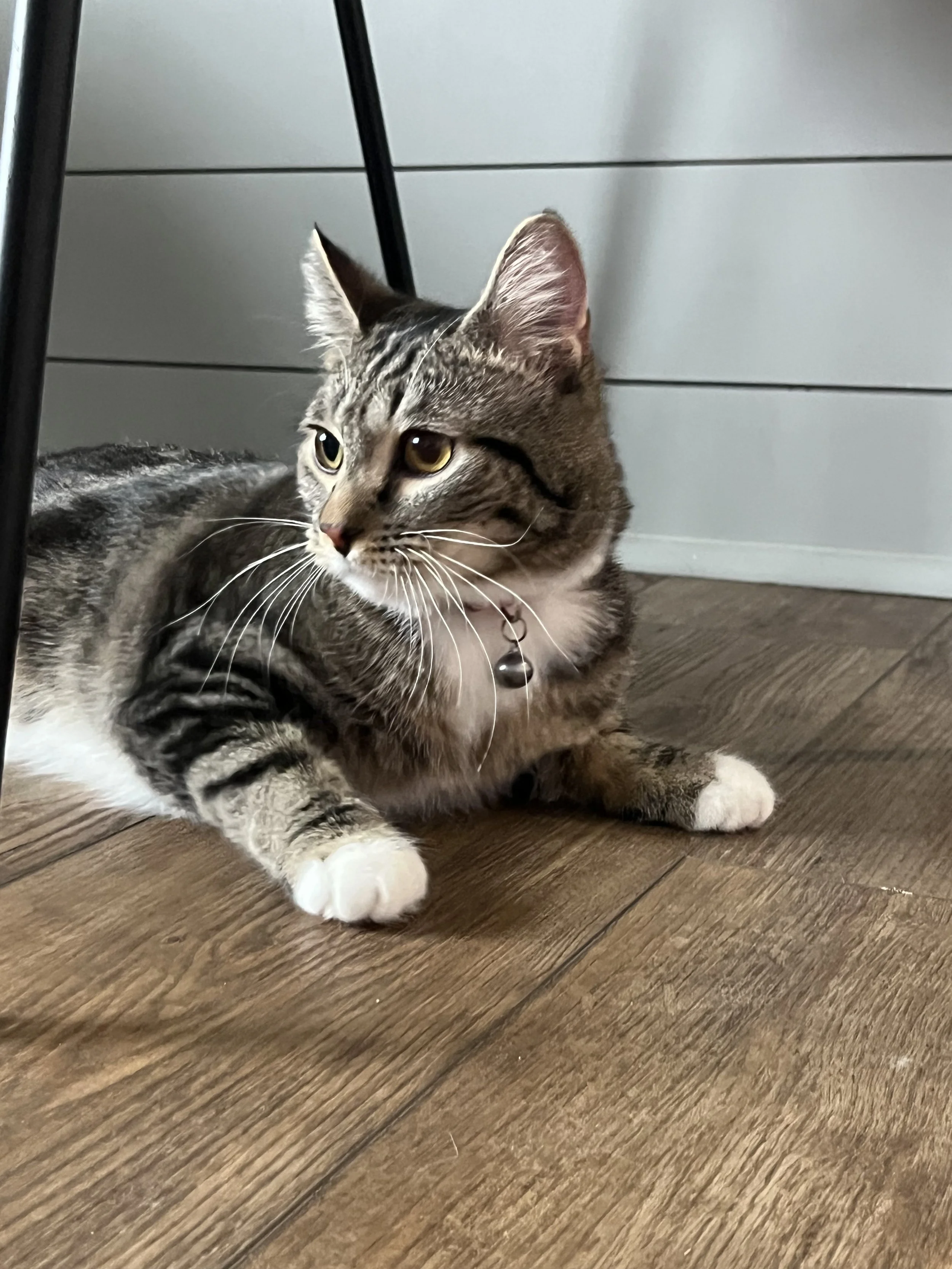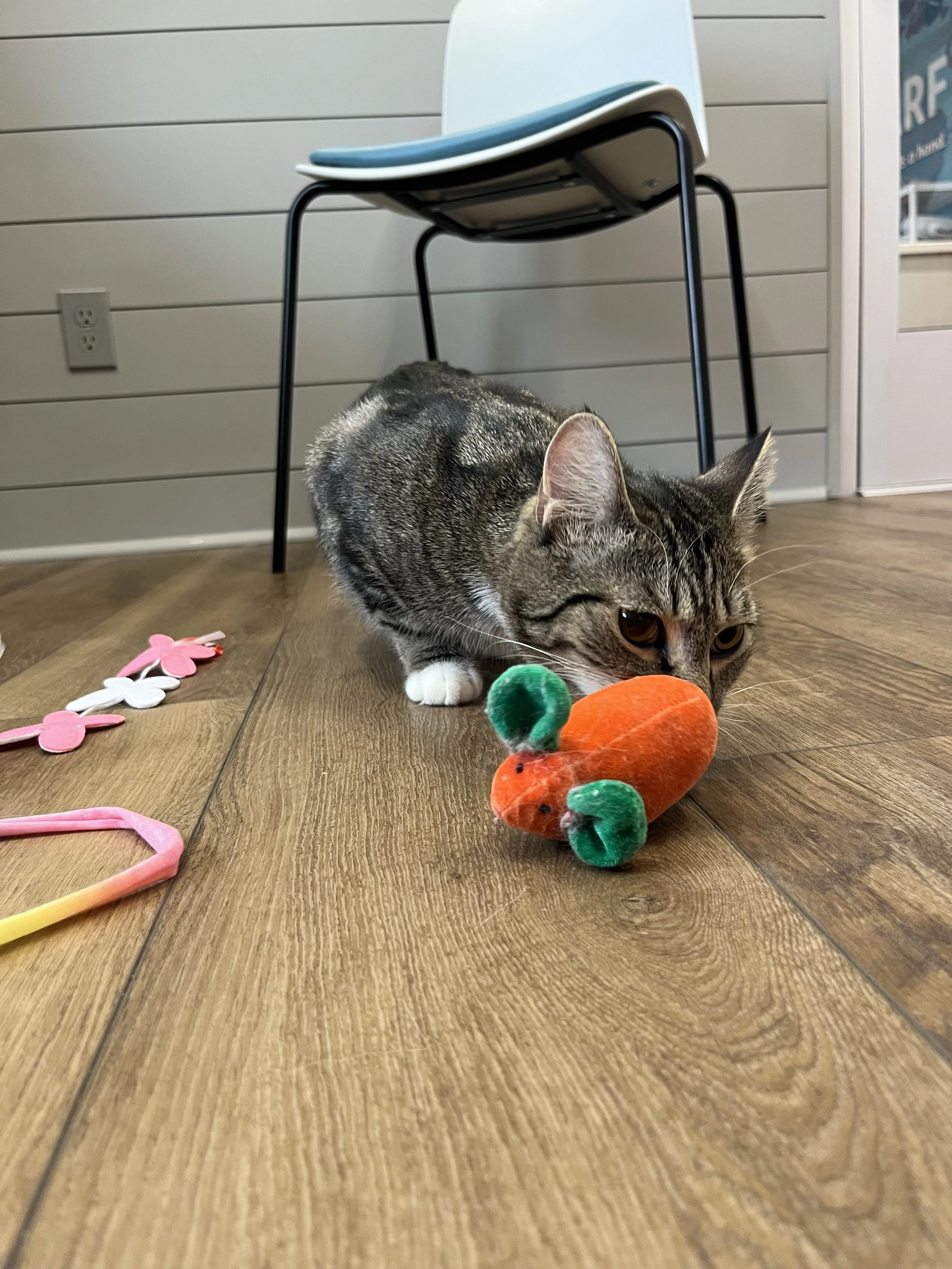FIP
Bailey’s Breakthrough: an FIP Success Story
Sydney J. Tamashiro, DVM
Reynolda Veterinary Hospital
Bailey came to AARF as a tiny, 6-week-old tabby after a good Samaritan saw her thrown from a car window. Despite this trauma, she recovered and was thriving in a foster home for months when she stopped gaining weight and developed a 106°F fever and a bloated belly. After a vet visit and some tests, a diagnosis was reached: FIP. A few years ago, this would have been a death sentence, but recent research and legal developments meant there was hope for Bailey.
FIP, or Feline Infectious Peritonitis, starts with Feline Enteric Coronavirus (FECV). Most of us first heard about coronaviruses five years ago when COVID-19 arrived on the global scene. But cat lovers and veterinarians had been fighting a losing battle against this coronavirus for decades. FECV is a common gastrointestinal bug that cannot be transmitted to people but circulates through almost all cat populations worldwide. The vast majority of cats that become infected with FECV only experience mild, short-term diarrhea. For a small, unfortunate percentage of cats, FECV mutates into Feline Infectious Peritonitis Virus (FIPV) and wreaks havoc throughout the body. This mutated version of the coronavirus is NOT transmitted between cats. The reason that the virus mutates in some cats and not others is not yet fully understood. Scientists cannot predict which cats will develop FIP but kittens and young cats make up the majority of cases.
Affected cats can have a variety of clinical signs including fever, lethargy, loss of appetite, build-up of fluid in body cavities, ocular, and neurologic signs. Many of these signs are non-specific and diagnosing FIP can be difficult. A combination of clinical signs and laboratory findings help veterinarians diagnose FIP.
FIP was first discovered in 1963, and after decades of research, dedicated veterinary scientists made a breakthrough towards a cure in 2016. This resulted in an effective treatment called GS-441524. Until recently, this medication was only available through black market channels from overseas sources. The black-market medication was extremely expensive, difficult to acquire, and often painful to administer. In 2024, everything changed when the FDA announced that it would not enforce regulations regarding GS-441524. While it is not an FDA-approved medication, GS-441524 can be compounded in US pharmacies and distributed in the US. This is a game-changer because this life-saving medication can now be sourced from safe, reliable pharmacies in forms that are painless and easy to administer to cats.
Five months after the FDA announcement, Bailey’s FIP diagnosis was made, Bailey’s veterinary team and the AARF Board knew this spunky kitten deserved a chance. Within a week of starting treatment, Bailey’s clinical signs diminished. Bailey gained weight and started playing again. After 84 days of treatment, Bailey is considered to be in remission. Bailey’s team will continue to monitor her for relapse, but her future is bright.
Cats and cat lovers now have an incredible new weapon in this war. With FIP cases on the rise globally, we must continue to battle this deadly disease. GS-441524 has an enormous body of research to support its use and the groundbreaking research continues. Since Bailey’s diagnosis, AARF has successfully treated four more kittens (Buzz, Ford, Ody, and Pluto) for FIP. Through the support of generous donors, AARF gave Bailey, Buzz, Ford, Ody, and Pluto a second chance at life.
With your support, AARF can continue to provide this kind of life-saving care to cats and kittens in need.



